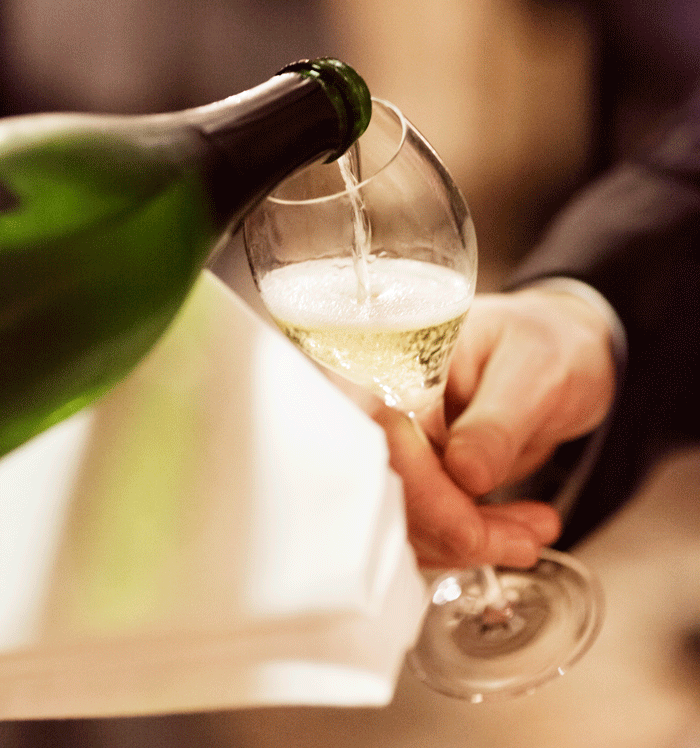How to match Champagne with food – Lunch & Learn 4
Author: Barbara Drew MW
When most people hear the word Champagne they think of canapés and receptions, parties and aperitifs – but as well as being an excellent celebration wine and the perfect start to an elegant evening, Champagne is one of the most versatile food wines around.
Champagne has two key features that make it fantastic for matching with food. The wine is highly acidic, with the grapes growing in a cold climate and being picked a little earlier than those used for still wine. As a result, the wine is tart and mouthwatering, ideal for cleansing your palate or cutting through rich foods such as smoked salmon or cheese. In addition, acidic dishes or those with acidic dressings can often cause problems with wine, making wines lose their definition, or seem “flabby”, but the high acidity in Champagne means it has no problem with such matches.
Secondly, the bubbles themselves increase the effect of cleansing your palate, and enhance the flavour of what you’re eating. This means Champagne is one of the most food friendly wines around, and can match a wide variety of different sustenance, from the everyday to the extravagant. Classic matches range from smoked salmon blinis to traditional fish & chips.
Not all Champagnes are alike, and the variety of different styles ensures plenty of opportunities for different food and wine pairings. For example, a young, steely blanc de blancs Champagne with flavours of lemon and green apple is perfect for starters, lighter dishes, or creamy cheeses. Try pairing with seared scallops, or a salad topped with a tangy vinaigrette.
Blanc de noirs wines from the red grapes Pinot Noir and Pinot Meunier tend to be a little more full bodied and can pair more readily with heartier dishes and those dominated by flavours of red fruits, such as duck with cherries.
With an aged, vintage Champagne, (apart from savouring it on its own of course) the richness, nuttiness and savoury notes which start to develop with age are an ideal match for more “umami” dishes based on legumes, mushrooms and even meats such as lamb or beef. Wines such as these are often served in wine glasses rather than flutes, to allow their complex and expressive aromas to be appreciated as much as possible.
Finally the demi-sec, or sweeter styles of Champagne are perfect for desserts or afternoon tea. Once the style of champagne favoured by the Russian tsars, sweeter champagnes are something of a rarity now but are perfect with a fruit tart or that classic summer favourite, strawberries with lightly sweetened mascarpone.
If you’d like to explore Champagne and food matching a little further (with some delicious examples), then why not join Barbara as she hosts her Lunch & Learn event exploring Champagnes to take you through Christmas on 6th December.



